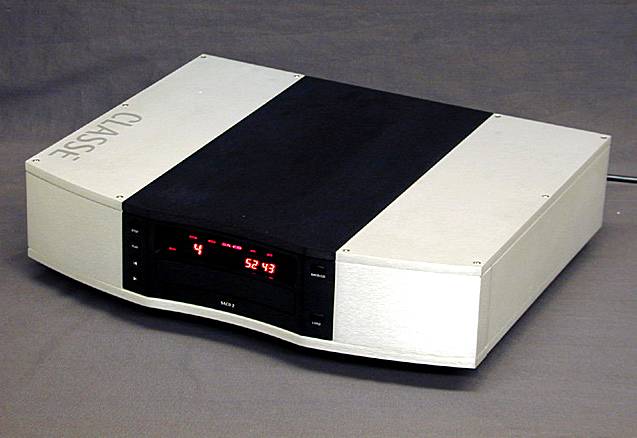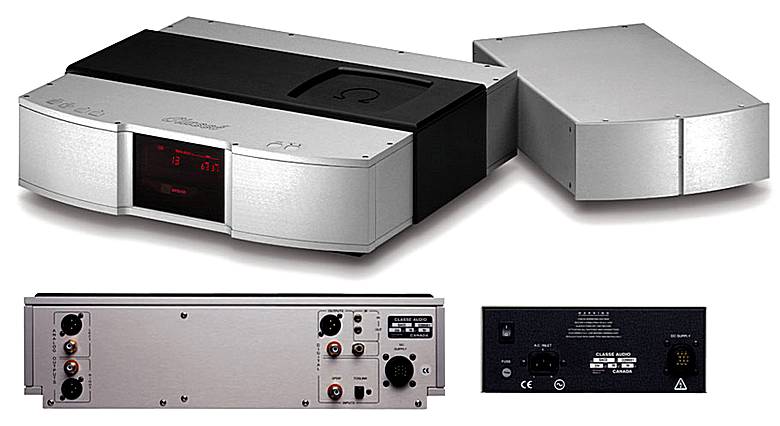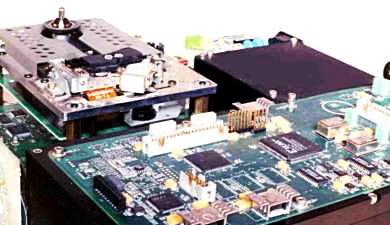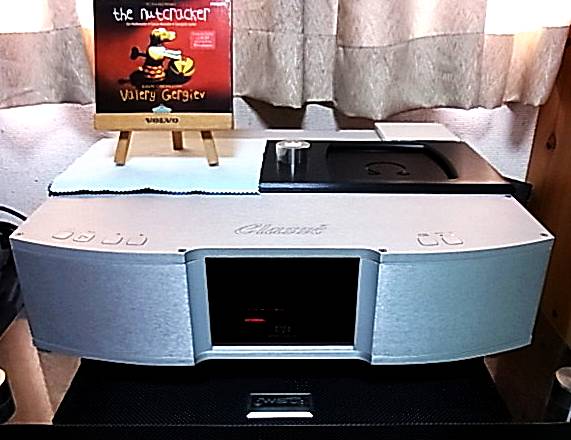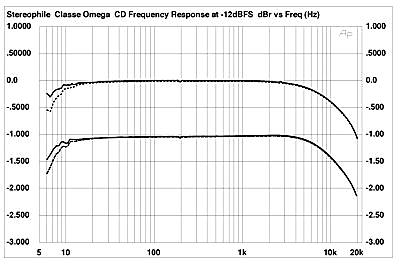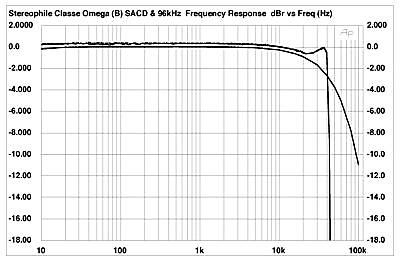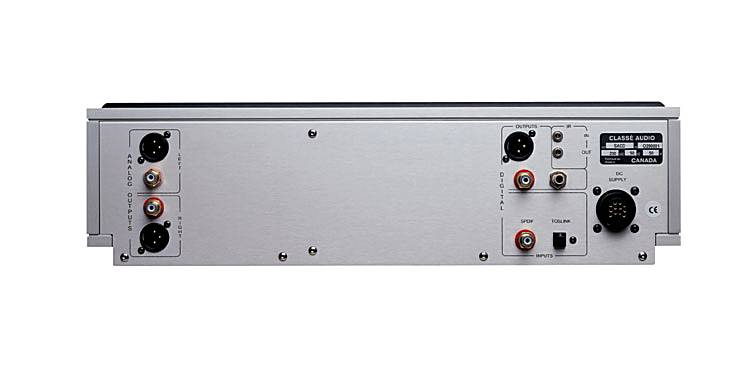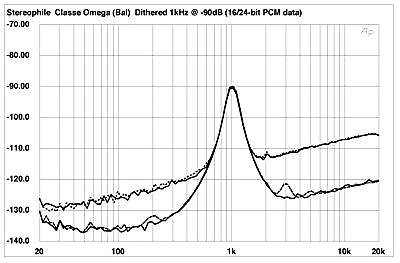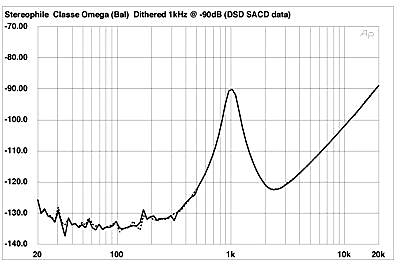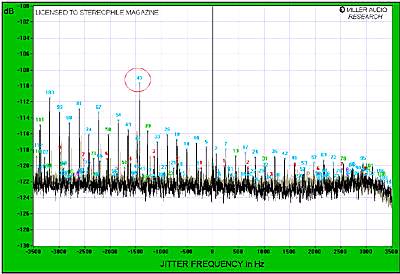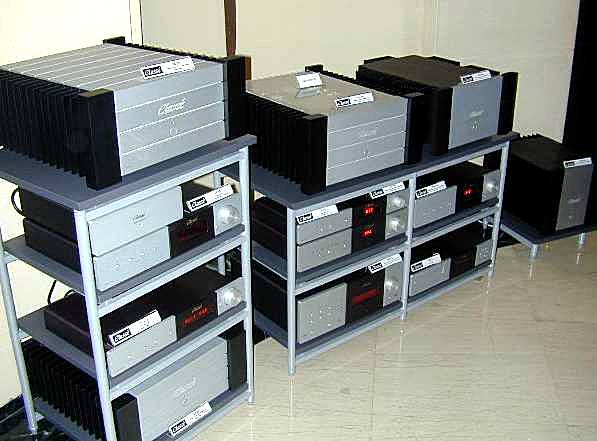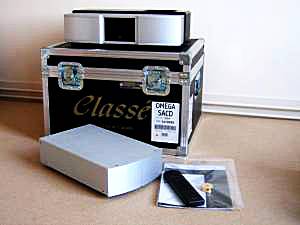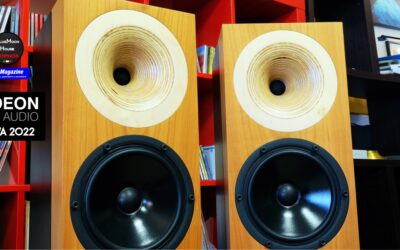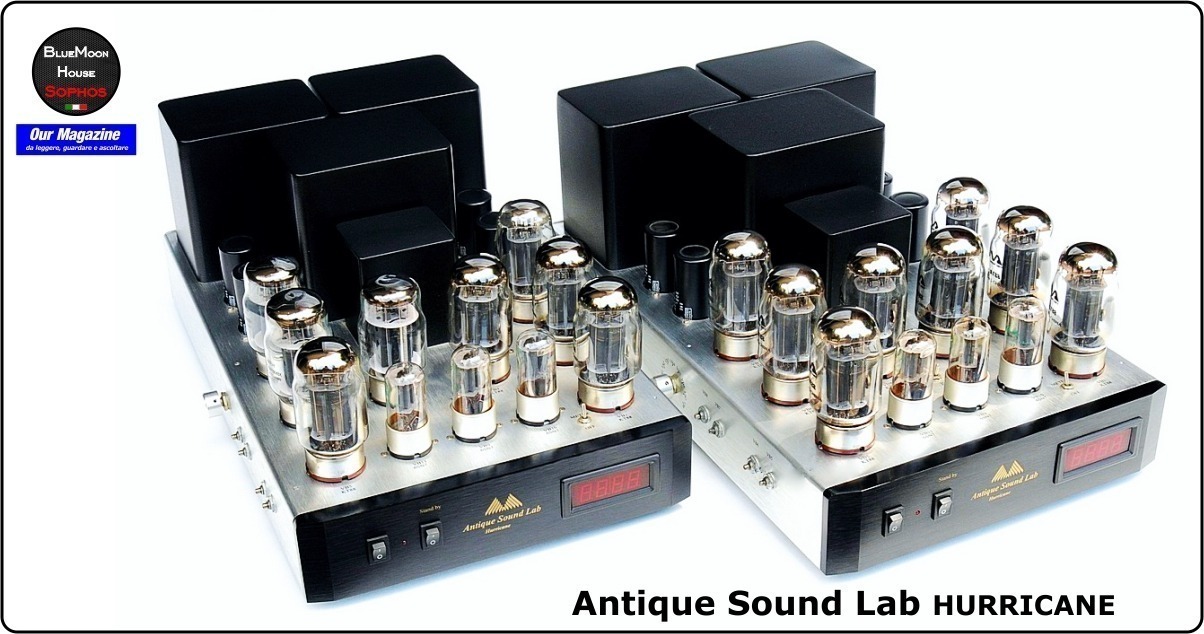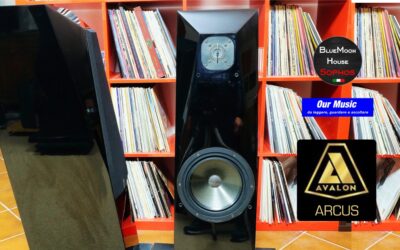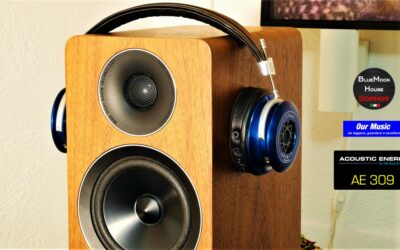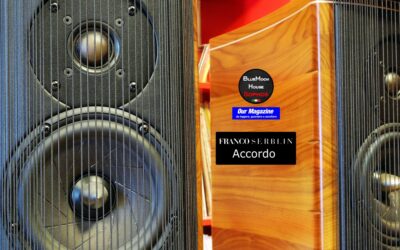 |
|---|
Classè CD-SACD Omega
Quote: euro 8.000 per apparecchio in perfetto stato e dotato di imballi.
Classè CD-SACD Omega è un eccellente lettore CD e SACD in due telai dalla pregevole fattura, come da tempo ci ha abituati la factory canadese. La particolare elegantissima estetica e il mobile in pesante alluminio spazzolato completano il quadro estetico e costruttivo di questa macchina. Il caricamento avviene dall’alto in una meccanica robusta, affidabile e precisa.
La componentistica è di livello assoluto, a cominciare dal circuito di conversione che adotta ben sei DAC Crystal CS4397.
Classè CD-SACD Omega
La circuitazione bilanciata a simmetria complementare e il circuito in “classe A” per la sezione SACD, fanno di questo lettore una macchina unica e confrontabile con i migliori prodotti presenti sul mercato (Linn CD 12, Accuphase SACD ed altri mostri sacri).
L’alimentazione completamente separata in un secondo telaio consta di due trasformatori, uno per la sezione digitale e l’altro per quella analogica. Grazie a questa superalimentazione viene fornita una forte spinta dinamica, oltre ad una precisone nella riproduzione che solo lettori di altissimo livello riescono ad offrire.
L’ascolto dei SuperAudioCD è ricco e vivissimo, colma di una musicalità che in alcuni passaggi tocca vette di eccellenza. Il timbro non si discosta dagli altri prodotti della casa costruttrice, sia preamplificatori che finali, con le caratteristiche soniche che noi appassionati ben conosciamo.
Le uscite analogiche presenti sono sia RCA che XLR, come pure le uscite digitali sono sia RCA che XLR. Sono presenti ingressi digitali SPDIF (RCA) e Ottico (TOSLINK).
Un telecomando di adeguata fattura è fornito in dotazione.
Bruno Fazzini
 |
|---|
Stereophile
Jonathan Scull – Nov 23, 2001
Classé’s Mike Viglas watched the audiophile skies, scratched his chin, and thought about his business. As he gazed, it occurred to him that if everyone in audio was moving downmarket to invade his territory, why not take his company and head upmarket? Thus was born Classé’s much-lauded Omega series.
Classé has guts. These are uncertain times, but here they are with an audiophile classic: an expensive two-channel Super Audio CD player that will also spin CDs and CD-Rs and sports lots of inputs and outputs, “Your last CD player, my friend!” enthused Viglas after he’d installed the unit in our loft….See more
Classè CD-SACD Omega Measurements
The Omega‘s error correction was good, but not in the class of the best DVD transport-based players I have experienced of late. It started to mute when playing track 31 on the Pierre Verany Test CD, which has 1mm breaks in the data spiral. The maximum unbalanced output level at 1kHz was a low 1.115V, and 2.253V from the balanced outputs. This was with CD data; with SACD, the maximum balanced level was slightly lower, at 2.238V. This is equivalent to just -0.06dB, and so shouldn’t invalidate subjective comparisons of the two media. The player didn’t invert absolute polarity (pin 2 of the XLRs appear to be wired as “hot”), and the output impedance from the single-ended jacks was a very low 17.7 ohms across the audioband, this doubling as expected from the balanced XLRs….See more
CD frequency response (fig.1, top pair of traces) was flat, though with a slight HF rolloff, reaching -1.1dB at 22kHz. The balanced and unbalanced outputs were identical in this respect. The response with a de-emphasized signal (fig.1, lower traces) was also flat. Fig.2 examines the response with both SACD and DVD-Audio data. The DSD-encoded signal on the Sony “tentative” test SACD gives a response that smoothly continues the top-octave rolloff seen in fig.1, reaching -10dB at 90kHz…..See more
Fig.1 Classé Omega, unbalanced CD frequency response at -12dBFS, without emphasis (top) and with emphasis (bottom). (Right channel dashed, 0.5dB/vertical div.)
Fig.2 Classé Omega, balanced SACD frequency response at -3dBFS (bottom) and external 96kHz LPCM frequency response at -12dBFS (top). (Right channel dashed, 2dB/vertical div.)
I had a devil of a job generating this graph, by the way; the Classé almost always refused to lock to a 96kHz datastream, whether this was a TosLink or electrical connection from a DVD player or from a professional A/D converter. And even when it did so, the lock was extremely unstable. The same problem occurred with 88.2kHz-sampled data….See more
The channel separation from the balanced outputs (not shown) was superb: better than 120dB in both directions. However, crosstalk from the RCA jacks held steady at a poor -40dB across the audioband. This is unusual, so I looked at the actual crosstalk waveform on a ‘scope while repeating the measurement…..See more
Fig.3 Classé Omega, 1/3-octave spectrum of dithered 1kHz tone at -90dBFS, with noise and spuriae (from top to bottom): 16-bit CD data, 24-bit external LPCM data (right channel dashed).
Repeating the spectral analysis with a 1kHz tone at the same level from SACD gave the traces shown in fig.4. The noise floor is very slightly higher in the midrange than with 24-bit LPCM data, but rises rapidly in the top three octaves of the audioband due to the aggressive noise-shaping used in the DSD encoding…..See more
Fig.4 Classé Omega, 1/3-octave spectrum of dithered 1kHz tone at -90dBFS, with noise and spuriae, DSD SACD data (right channel dashed).
Fig.12 Classé Omega, high-resolution jitter spectrum of unbalanced analog output signal (11.025kHz at -6dBFS with LSB toggled at 229Hz). Center frequency of trace, 11.025kHz; frequency range, ±3.5kHz. Grayed-out trace is similar analysis for 11.025kHz tone (no LF LSB toggling) from SACD.
Stereo Times
By Russell Lichter
Classé Audio SACD 2 CD/SACD Player
Introduction
I originally requested the loan of an SACD player so that, at long last, I could hear the mythical DSD layer of my Telarc hybrid discs. I already knew the superb quality of the PCM layer but I had never heard DSD sound. Finally, I was going to hear for myself what all the SACD fuss was about. In the process I learned a little about design decisions, sigma-delta conversion, component voicing, and so forth, but as in life generally, what I ultimately discovered was not quite what I had anticipated. Living with the Classé Omega SACD 2 turned out to be more about hardware and circuit design, that is to say, about sound, than about one format versus another…….See more
Specifications
Analog output:
Balanced (XLR): 1.2V
Unbalanced (RCA): 2.2V
Power supply
Transformer size: 55VA custom toroidal x 2
Number of capacitors: 18
Total capacitance: 84,600µF
Digital section
D/A converter: Crystal CS4397 stereo delta-sigma x 3
Up-sampling: 24 bit/44.1/48/88.2/96/192, user selectable
AES/EBU output: 1x
S/PDIF output: 1x
Software support
CD, CDR, CDRW, HDCD, SACD
Weight & measurements
Net weight: 30lbs
Width: 17-3/8”
Height: 4-3/4”
Depth: 15”


